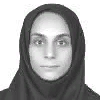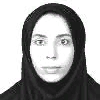International Journal of Information Technology and Computer Science (IJITCS)
IJITCS Vol. 4, No. 3, 8 Apr. 2012
Cover page and Table of Contents: PDF (size: 166KB)
Classification of Electroencephalographic Changes in Meditation and Rest: using Correlation Dimension and Wavelet Coefficients
Full Text (PDF, 166KB), PP.24-30
Views: 0 Downloads: 0
Author(s)
Index Terms
Classification, Correlation Dimension, Electroencephalogram, Meditation, Wavelet Coefficients
Abstract
Meditation is a practice of concentrated focus upon the breath in order to still the mind. In this paper we have investigated an algorithm to classify rest and meditation, by processing of electroencephalogram (EEG) signals through the Wavelet and nonlinear methods. For this purpose, two types of EEG time series (before, and during meditation) of 25 healthy women are collected in the meditation clinic in Mashhad. Correlation dimension and Wavelet coefficients at the forth decomposition level of EEG signals in Fz, Cz and Pz are extracted and used as an input of different classifiers. In order to evaluate performance of the classifiers, the classification accuracies and mean square error (MSE) of the classifiers were examined. The results show that the Fisher discriminant and Parzen classifier trained on both composite features obtain higher accuracy than that of the others. The total classification accuracy of the Fisher discriminant and Parzen classifier applying Wavelet coefficients was 85.02% and 84.75%, respectively which is raised to 92.37% in both classifiers using Correlation dimensions.
Cite This Paper
Atefeh Goshvarpour, Ateke Goshvarpour, "Classification of Electroencephalographic Changes in Meditation and Rest: using Correlation Dimension and Wavelet Coefficients", International Journal of Information Technology and Computer Science(IJITCS), vol.4, no.3, pp.24-30, 2012. DOI:10.5815/ijitcs.2012.03.04
Reference
[1]Zeidan F., Johnson S.K., Diamond B.J., David Z., Goolkasian P. (2010). Mindfulness meditation improves cognition: Evidence of brief mental training. Consciousness and Cognition, 19, 597−605.
[2]Mars T.S., Abbey H. (2010). Mindfulness meditation practice as a healthcare intervention: a systematic review, International Journal of Osteopathic Medicine, 13, 56–66.
[3]Matousek R.H., Dobkin P.L., Pruessner J. (2010). Cortisol as a marker for improvement in mindfulness–based stress reduction, Complementary Therapies in Clinical Practice, 16, 13–19.
[4]Grossman P., Niemann L., Schmidt S., Walach H. (2004). Mindfulness–based stress reduction and health benefits: a meta–analysis. J Psychosom Res, 57(1), 35–43.
[5]Corby J.C., Roth W.T., Zarcone Jr.V.P., Kopell B.S. (1978). Psychophysiological correlates of the practice of Tantric Yoga meditation. Arch. Gen. Psychiatry, 35, 571– 577.
[6]Delmonte M.M. (1984). Electrocortical activity and related phenomena associated with meditation practice: a literature review. Int J Neurosci, 24, 217– 231.
[7]Travis F. (2001). Autonomic and EEG patterns distinguish transcending from other experiences during transcendental meditation practice. Int J Psychophysiol, 42, 1– 9.
[8]Goshvarpour A., Rahati S., Saadatian V. (2010). Estimating depth of meditation using electroencephalogram and heart rate signals, [MSc. Thesis] Department of Biomedical Engineering, Islamic Azad University, Mashhad Branch, Iran. [Persian]
[9]Goshvarpour A., Rahati S., Saadatian V. (2010). Analysis of electroencephalogram and heart rate signals during meditation using Hopfield neural network, [MSc. Thesis] Department of Biomedical Engineering, Islamic Azad University, Mashhad Branch, Iran. [Persian]
[10]Goshvarpour A., Goshvarpour A., Rahati S., Saadatian V., Morvarid M. (2011). Phase space in EEG signals of women referred to meditation clinic. JBiSE, 4, 479-482.
[11]Hebert JR, et al. (2005). Enhanced EEG alpha time–domain phase synchrony during Transcendental Meditation: implications for cortical integration theory. Signal Processing, 85, 2213–2232.
[12]Lo P–C, Huang H–Y. (2007). Investigation of meditation scenario by quantifying the complexity index of EEG, Journal of Mathematical Psychology, 30, 389–400.
[13]Cahn BR, Polich J. (2006). Meditation states and traits: EEG, ERP, and neuroimaging studies, Psychological Bulletin, 132, 180–211.
[14]Daubechies I. (1990). The wavelet transform, time-frequency localization and signal analysis. IEEE Trans Inform Theory, 36(5), 961–1005.
[15]Tikkanen P. (1999). Characterization and application of analysis methods for ECG and time interval variability data. Department of Physical Sciences Oulu, Finland: University of Oulu.
[16]Henry A., Lovell N. (1999) Nonlinear dynamics time series analysis, in: M. Akay (Eds.), Nonlinear biomedical signal processing - dynamic analysis and modeling, John Wiley & Sons-IEEE Press, Hanover, New Hampshire, 1-39.
[17]Jain A.K., Duin P.W., Mao J. (2000). Statistical Pattern recognition: A Review, IEEE Transactions on Pattern Analysis and machine Intelligence, 2, 4-37.
[18]Fisher R.A. (1936). The Use of Multiple Measurements in Taxonomic Problems. Annals of Eugenics, 7(2), 179–188.
[19]Bremner D., Demaine E., Erickson J., Iacono J., Langerman S., Morin P., Toussaint G. (2005). Outputsensitive algorithms for computing nearest-neighbor decision boundaries. Discrete and Computational Geometry, 33(4), 593–604.
[20]Allen F.R., Ambikairajah E., Lovell N.H., Celler B.G. (2006) Classification of a known sequence of motions and postures from accelerometry data using adapted Gaussian mixture models. Physiol Meas, 27, 935–951.

